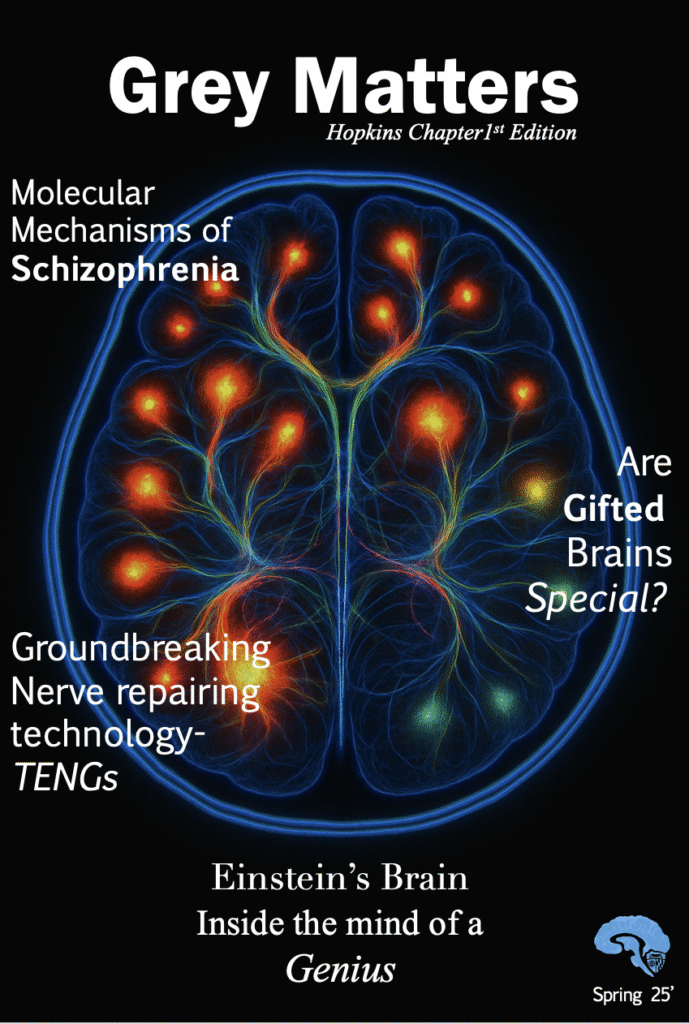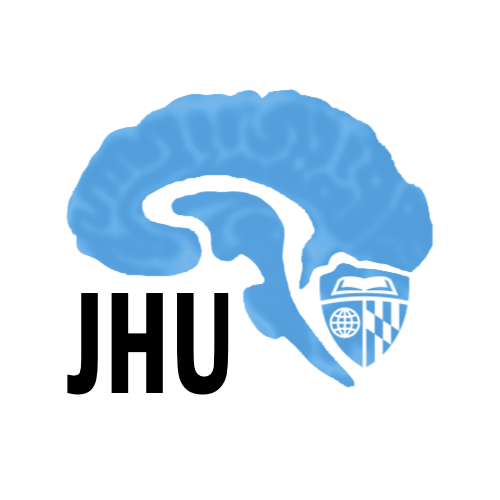
Read our Spring 2025 article here!
Identifying Structural MRI Patterns in Gifted Children using Machine Learning
This article examines how machine learning applied to structural MRI scans can distinguish gifted from non-gifted children. Using a decision tree model, researchers achieved 82% accuracy. Key differences were found in gray matter volume and cortical thickness in several left-hemisphere regions, including the posterior cingulate, paracentral, superior temporal, and superior parietal cortices.
The Brain’s Bridge Between Math and Music
This article traces the unusual history and study of Albert Einstein’s brain after his death in 1955. Pathologist Thomas Harvey secretly removed and preserved it, with research later revealing unique features such as more glial cells, densely packed neurons, and an enlarged parietal lobe. While these traits may relate to his reasoning and creativity, scientists caution against broad conclusions, noting that Einstein’s genius likely also came from his curiosity and persistence.
Mind Over Spine
This article explores the physical, emotional, and social challenges of living with a spinal cord injury (SCI), including ableism, loss of independence, and cultural stigma. Many patients struggle with anxiety and depression, but strong family and community support can build resilience and improve quality of life. Personal stories and emerging technologies—such as spinal implants, brain-computer interfaces, and exoskeletons—highlight how support and innovation can foster adaptation and independence. Ultimately, SCI is framed not as an end, but as a call for resilience and redefined possibilities.
Revolutionizing Nerve Repair: A Leap Toward Healing the Impossible
This article highlights a breakthrough in treating severe nerve injuries with tissue-engineered nerve grafts (TENGs). Unlike traditional methods, TENGs use living, stretched nerve fibers that guide axon growth and work with Schwann cells to promote healing. In pig studies, they successfully restored motor and sensory function across 5 cm nerve gaps—an unprecedented result. Though more research is needed, TENGs mark a major step forward in nerve regeneration and recovery.
NeuroTrALE
This article introduces NeuroTrALE, an AI-powered brain imaging tool that tackles the challenges of analyzing massive, complex datasets. Traditional axon-tracing methods are slow and error-prone, but NeuroTrALE combines machine learning with human input to speed up and refine annotations, cutting processing time by up to 90%. Built on Google’s Neuroglancer, it offers powerful visualization, editing, and scalability while still relying on human oversight. By enabling more accurate brain mapping, NeuroTrALE paves the way for breakthroughs in understanding neurological diseases like Alzheimer’s and advancing personalized medicine.
Why Understanding Neonatal Stroke Matters More than You Think
This article highlights recent advances and challenges in neuroscience research, from rare conditions like Neonatal Arterial Ischemic Stroke (NAIS) to complex disorders such as schizophrenia. Studies emphasize the roles of genes, brain structure, and neurotransmitters in shaping symptoms and treatment responses. To accelerate progress, researchers are leveraging AI tools like NeuroTrALE, which enable faster and more accurate analysis of brain imaging data. Together, these developments reflect a push to integrate biology, technology, and therapy to improve diagnosis and treatment of neurological and psychiatric disorders.
Molecular Mechanisms Behind Schizophrenia
Schizophrenia is a lifelong brain disorder affecting less than one percent of the U.S. population, with symptoms ranging from hallucinations and delusions to cognitive and emotional difficulties. Research links it to genetic factors like the C4 protein, structural brain changes, and altered neurotransmitter systems, particularly dopamine, serotonin, glutamate, and acetylcholine. While traditional antipsychotics mainly target dopamine, newer treatments such as Cobenfy offer hope for addressing a broader range of symptoms and improving quality of life.
Awake During Brain Surgery? Here’s how it Works…
Awake brain surgery, or awake craniotomy, allows neurosurgeons to remove tumors or treat epilepsy while the patient remains conscious, providing real-time feedback to preserve critical brain functions like speech or movement. Since the brain has no pain receptors, patients feel no discomfort once the skull is opened, though anesthesia is used for the initial incision. By directly mapping and testing brain regions during surgery, doctors can minimize complications and protect essential abilities, making this approach a powerful tool for delicate procedures.
